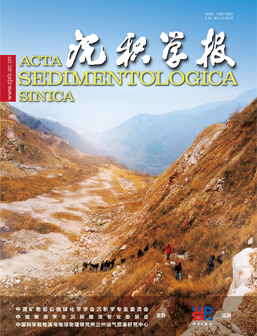Sedimentary Characteristics of the Late Paleozoic Ice Age in the Lhasa Block: A Case Study from the Xainza Area
doi: 10.14027/j.issn.1000-0550.2023.084
- Received Date: 2023-03-10
- Available Online: 2023-10-11
-
Key words:
- Lhasa Block /
- Xainza area /
- The Late Paleozoic ice age /
- lithofacies /
- sedimentary environment /
- glacier evolution
Abstract: [Objective] Among the past ice chamber climate records, the Late Paleozoic ice age, which developed mainly in the Gondwana continent, is the most similar to the current climate evolution It has become a hot target for comparative studies of Quaternary ice ages and ice chamber climate studies. The Late Paleozoic ice age, as the glacial event with the widest influence range and the richest geological record since the Phanerozoic, recorded the complete greenhouse-icehouse-greenhouse climate change process, which is of great significance for us to understand the evolution of earth climate. The Lhasa Block originated from the Gondwana continent and was located at the northeastern margin of the Gondwana continent during the Late Paleozoic period. Although a lot of studies have been conducted on the spatial and temporal evolution and controlling factors of the Late Paleozoic ice age, the sedimentary evolution history of the Lhasa Block during the Late Paleozoic ice age is still unclear and needs to be strengthened. [Methods] In view of this, this study selected the Late Paleozoic strata in the Xainza area of the Lhasa Block to carry out a 1:200 scale profile survey, which includes rock color, lithological characteristics, rock thickness, sedimentary structures, fossils and contact relationships. Lithofacies and lithofacies combinations were classified for glacial development, and sedimentary architecture analysis was applied to find the lateral and vertical changes of sedimentary facies to identify the sedimentary environment and recover the glacial sedimentary system. [Results and Discussions] The study shows that the Late Paleozoic ice age records of Lhasa block are mainly present at the Lagar Formation, with the age constraint of Late Carboniferous-Early Permian. According to the glacial deposits of Lagar Formation, twenty lithofacies and sixteen typical lithofacies associations are recognized, which are arranged into six sedimentary environments, including shallow sea shelf, baseline fan, subglacial, ice river, ice lake and outwash fan. [Conclusions] The Late Paleozoic glaciers in the central part of the Lhasa Block are located in the nearshore glaciomarine environment, and the glacial depositional system is mainly divided into marine and terrestrial phases. In addition, a number of small glacial-interglacial cyclones can be delineated in the early evolutionary stage and late evolutionary stage of the Lagar Formation based on the variation of glacial and non-glacial environments in the vertical direction. The sedimentary system analysis for the Lagar Formation sedimentary sequences indicates that the Late Paleozoic ice age in the Xainza area of the Lhasa Block experienced a transition from early marine to late terrestrial glaciations, indicating a global trend of gradual climate warming from the Late Carboniferous to the Early Permian, consistent with the global Late Paleozoic ice age evolutionary features. The Late Paleozoic ice age was the closest global ice age to the Quaternary ice age and is an important window for understanding future climate shifts such as glacial melting and global warming on Earth. Conducting research on the Late Paleozoic sedimentary record of the Lhasa Block is of great significance for exploring the spatial and temporal evolution, climate change and driving mechanisms of the global Late Paleozoic ice age.
| Citation: | Sedimentary Characteristics of the Late Paleozoic Ice Age in the Lhasa Block: A Case Study from the Xainza Area[J]. Acta Sedimentologica Sinica. doi: 10.14027/j.issn.1000-0550.2023.084 |






 DownLoad:
DownLoad: